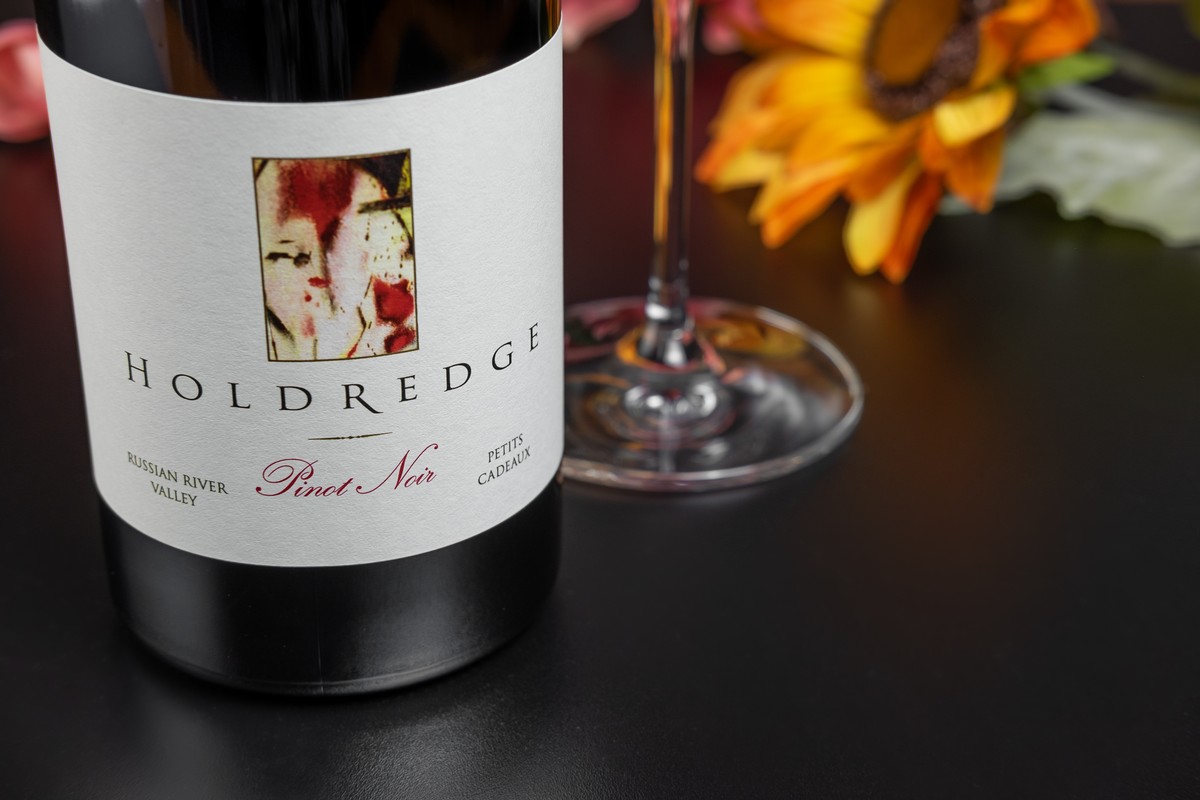2022 Holdredge Petits Cadeaux Russian River Valley Pinot Noir
Man, I have loved making this wine over the years. It always offers an opportunity to use the tiniest clusters, with berries so small that the amount of juice is dwarfed by the amount of skin, resulting in a powerhouse that somehow remains true to the finesse Pinot offers. I always liken it to one of those Cirque du Soleil shows where the performers do some amazing feat that requires amazing muscles, but in the most graceful way possible.
I never know which vineyard or which clones will ultimately make this wine. Sometimes, due to the vagaries of nature, the clones I expect to be tiny aren’t. And sometimes, even the tiny ones just don’t give me what I’m looking for. After not making a 2020 (fires/smoke), and nothing in 2021 really singing this song for me, I was thrilled that it came back in 2022.
I had been keeping watch on a couple particular places that in the past had given me what I needed. One was planted to clone 943, a typically very small cluster with generally among the very smallest berries among the many clones of Pinot. Gracie happened to be helping us sort the day the 943 came in and she was really taken by how tiny the clusters were; not even filling her small hands. As we worked together, we talked about this and what that cluster morphology might mean to the wine (if all went well).
In May, Gracie helped me rack all the wines off their lees and back to barrel. When we got to the barrels, I reminded her which grapes these were, and we tasted through them. She’d be the first to say she doesn’t have a palate; I’d be the first to correct her about that. We reached a broad general consensus that the 943 was the best of the bunch, and about 20% new oak was the best blend. Knowing this might be our last version of this, it was great to have her involved at the front and back of this wine.
But I felt it was just missing something, and finally, I tried blending a little of the wine we settle off the lees from all our barrels. This tends to have a real creaminess to it, and it’s what Carri and I like to bottle for ourselves, although it has also gone into our “Strawberry Fields” blend over the years. I tried 3%, 4% and 5% percent and voila, adding just 4% just gave it a creaminess I really like.
This has the power I look for, rich fruit and it’s the kind of wine that will work with all kinds of hearty winter fare, but still has a very silky texture. For the next year or so, I’d decant it and enjoy it, or if you have some degree of patience, it should be a terrific wine over the next 7-8 years. Maybe longer, depending on what you like. People tell us they like to hear what we paired it with, and for our first bottle of this I went pretty old school: I dry-brined a prime boneless rib eye for 24 hours, did a quick reverse sear to medium rare, and finished it with Sauce Bordelaise (I used the pressure cooker to make a respectable veal stock rather quickly). I added a potato gratin with sharp cheddar, gruyere and parmesan cheeses, and plated it with the obligatory green bean (singular). I can’t cook like that every night, but I’ll tell you, that meat and this wine was a really good night. Only 151 cases made.
